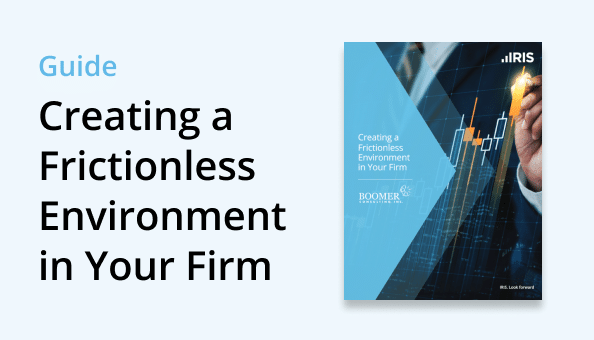BLOGS
Hiring Employees In Canada? 5 Things U.S Companies Need to Know

For many companies and brands, expanding operations just a few miles north and entering Canada can seem easy. It may be close to home; however, as soon as you cross the border, your company will face new workforce management challenges, as payroll and employment regulations in Canada are VERY different from those in the U.S.
To make expanding to Canada a bit easier, here are five steps you should follow when hiring employees in Canada.
1. Work with both governments
Companies that choose to work in Canada and the United States are responsible for communicating with both governments. Before you start expanding business to Canada, you must make sure that both the U.S. and Canadian governments know what is happening so you can be taxed appropriately in both nations.
Because your company already operates in the U.S., starting with the U.S. Government first is wise. Consider speaking with a local Small Business Development Center to ensure all paperwork is in order.
One piece of paperwork that is often overlooked but essential to starting your company in Canada is a multi-entry Visa to Canada. This will allow you to travel to Canada for six months at a time as many times as you want. This makes it easier for you to travel to and from Canada as you continue to work on your business.
Because you want to do business in Canada, obtaining your Canadian business number (BN) is important. Not only does this make it legal to do business in Canada, but it is also how you will track income tax and employment insurance.
Once you have a BN, you must set up the Employer Health Tax (EHT) remittance and register with the local Workplace Safety and Insurance Board. Technically, you don’t have to register with the boards until you hire your first Canadian employee. Still, it’s important to establish a clear relationship with them early in establishing your company in Canada.
Some provinces and territories may require permanent residency or Canadian citizenship to register your business. British Columbia, Alberta, Ontario, Quebec, Prince Edward Island, Nova Scotia, and New Brunswick are provinces that waive the corporate directors' residency requirements.
Before going any further, check to see if you need to apply for an LMIA. A Labour Market Impact Assessment (LMIA) is a way for the Canadian government to evaluate the impact your company will have on the Canadian labor market and is essential when hiring a Canadian employee.
2. Learn the differences between employment laws and regulations in the U.S. vs Canada
You would never imagine doing business in Sweden or Brazil without learning a bit about their culture first; the same is true for working in Canada. If you rush into Canada assuming it’s exactly like the U.S., but with colder winters, you’re going to run into a lot of resistance in hiring, managing, and working with your Canadian employees.
Here are some of the largest employment law differences you need to be aware of:
- At-Will Employment: For many states in the U.S., most jobs are ‘at-will’. This means the employer or employee can terminate their relationship at any time and for any reason. In the U.S., it’s accepted that an employer can let an employee go without proving cause. In Canada, the relationship between employer and employee is much more structured. Unless expressly stated when hired, the relationship is expected to last for an indefinite period, and it can only be terminated if there is a just cause or with as much as three weeks written notice.
- Maternity and Paternity Leave: The U.S. has no legal requirement for paid maternity or paternity leave. In Canada, there is a government mandate for maternity and paternity leave where employees receive benefits of 55% of their average weekly insurable wage for 15 weeks. Additionally, Canadian employees can take up to 18 months of unpaid leave. It’s expected that the employer will hire a temporary worker to fill that open position, but they must offer the position back to the employee when they complete their leave.
- Holidays: Some U.S. holidays line up with Canadian holidays, but companies need to have a clear view of statutory Canadian holidays. Canadian law protects the observance of those holidays.
- Vacation pay: In Canada, vacation pay is calculated by percentage of yearly wages (at least 4% of the gross wages under 5 years of service & and at least 6% of gross wages for 5 or more years of service).
3. Maximize your ability to recruit and hire skilled workers
In the U.S., recruitment and hiring are traditionally focused on the employee showcasing their skills and experience to convince the employer to hire them. Companies can require cover letters, multiple rounds of interviews, and even work samples before hiring an employee. Those standards and expectations will not work in Canada.
Canada is an employee’s market. With low unemployment and the help of legislation, the market is built to empower Canadians to find the best job. When looking for new talent, the employer compels the employee to consider the position. Long drawn-out negotiations often lead to candidates accepting other offers.
For each job opening, you are required to advertise job openings on the Canadian Government’s Job Bank and conduct at least two additional recruitment methods. One of the extra methods must be national in scope and accessible by residents in any province or territory.
You must also use the Job Match service when your company uses the Canadian Job Bank. This creates an anonymous system in which each candidate is evaluated on their skills and talents to eliminate potential bias or discrimination. All records of your recruitment and advertising efforts for an open position must be on file for at least six years. An accredited HR partner in Canada can help with this process.
Within a job advertisement, each advertisement is required to have all of the following details and information.
- Your company's operating name
- Business address
- Title of the position
- All relevant job duties
- Terms of employment
- Language of work. English or French are the only languages required as part of your LMI application and advertisement. Still, if another language is essential, you must include a written justification as part of the application.
- Wage must include information about any incremental raises, performance pay, and/or bonuses. A wage range can be used for this requirement, but the minimum wage stated in the wage range must meet the prevailing wage.
- Benefits offered
- Locations of work
- Contact information including telephone number, cell phone number, email address, fax number, and/or mailing address
- Skills requirements including any education and work experience relevant to the position
4. Manage the complexity of paying employees in Canadian dollars (CAD)
Payroll in Canada and the United States involves several similarities. For example, there are minimum wage rates that vary by state in the U.S. and by province in Canada. However, there are also key differences due to variations in tax regulations, employment laws, and other factors.
For instance, while both countries require that certain taxes be withheld from pay, Canadian payroll taxes include federal and provincial/territorial income taxes, Employment Insurance (EI), and Canada Pension Plan (CPP) contributions. There is no withholding for healthcare contributions, as the Canadian government pays that. Any elected group benefits for employees would be at the employer's discretion to offer and are recommended.
Perhaps the most significant difference deals with currency. Paying your employees in Canadian dollars (CAD) can be complex due to currency conversion and fluctuating exchange rates. Fluctuations in exchange rates can impact the overall cost of payroll. Consider using financial instruments or strategies to manage exchange rate risks if the organization deals with significant currency volatility.
5. Learn what reports and paperwork you need to provide
Just like U.S. employers are required to file year-end reports, there are Canadian reports you need to track and report at year-end.
Some of these forms include:
- GST/HST returns
- T2 - Corporate income tax return
- NR4 - Non-resident tax withholding, remitting, and reporting
- T4/T4A – Employee Income tax summary issued to each employee (like the W-2 in the United States)
- These requirements depend on employment classifications/type of employee(s) including seasonal, contractors & part-time to name a few
- For the province of Quebec, submitting to Revenue Quebec is a requirement and does not eliminate the requirement of submission to the CRA
- In these scenarios, businesses will need to file with the CRA and Revenue Quebec
If these reports are not filed on time, there are late fines and penalties for each late report. For tax returns, the late filing is 5% of your balance owing, plus an additional 1% for each month you file after the due date, to a maximum of 12% for 12 months.
Make your move to Canada easier by partnering with a Canadian Payroll and HR expert
Managing taxes, payroll, and ever-changing employment regulations can be difficult when only dealing with one country. By stretching across the border, you’re doubling the paperwork, legislation, and requirements your company is bound to and doubling the work to ensure you comply and are not subject to fines or even potential legal action.
You could try to manage it all on your own, or you can work with a trusted partner who is an expert in Canadian HR and payroll requirements.
IRIS Payroll Services Inc (PSI) simplifies Canadian payroll and HR for you. We make it easy to navigate the market so you can focus on building and managing your company. At the same time, we help ensure you are always in compliance and your Canadian employees are paid on time, in Canadian dollars, every time. We offer straightforward payroll and HR services, giving you the support you need, when you need it.
Get started today and discover how IRIS PSI can simplify your Canadian HR and Canadian payroll needs.













